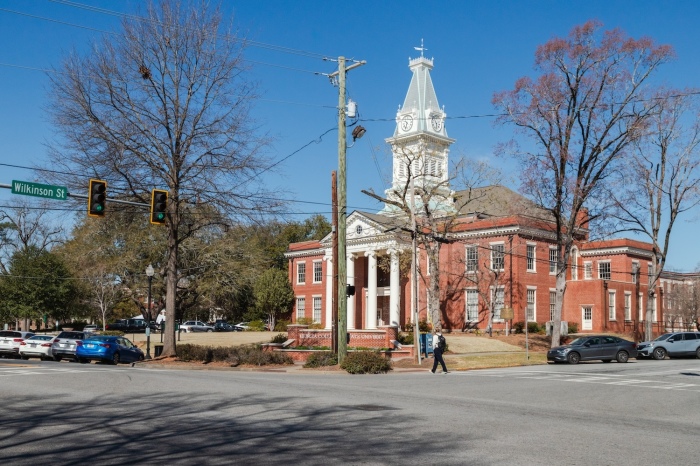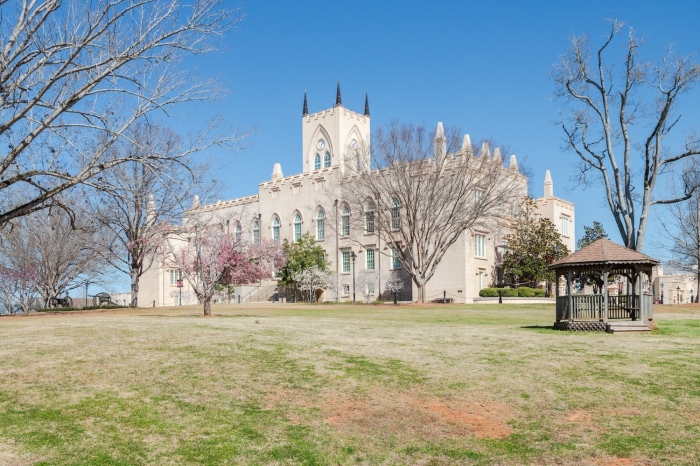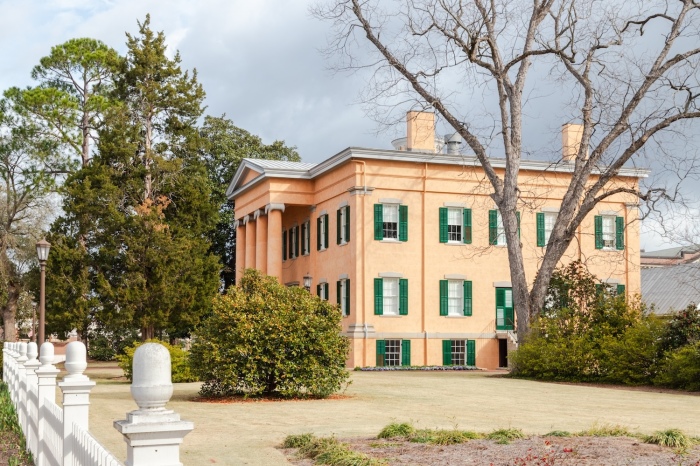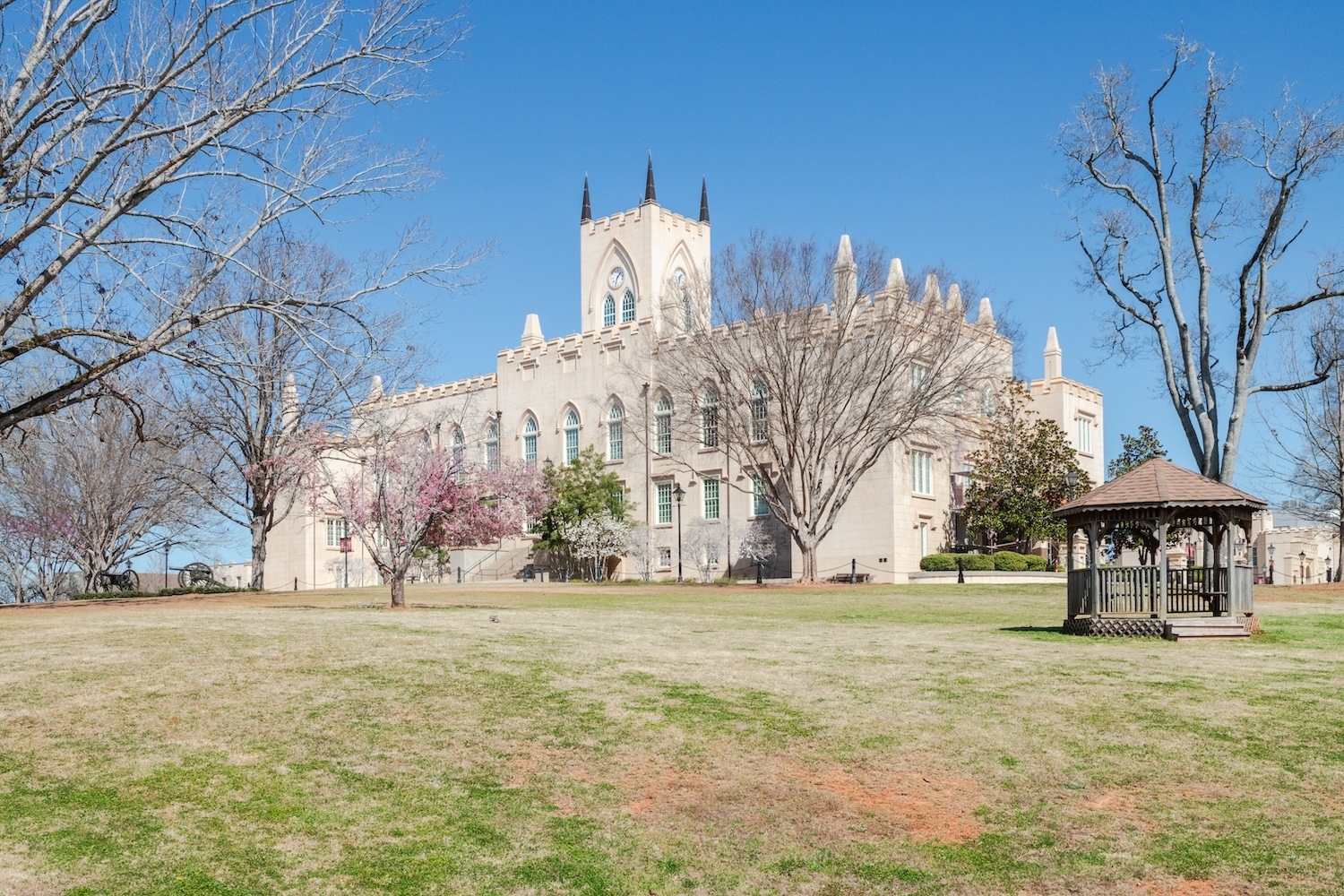
Milledgeville is a small town that punches well above its weight.
Long overshadowed by Savannah to the east and Macon to the west, the onetime capital of Georgia rewards visitors who seek the authentic South.
Founded in 1803, the town (legally incorporated as a city) and seat of surrounding Baldwin County was deliberately laid out to be Georgia’s state capital in the same way Washington was planned as the national capital. Many of the streets are named after patriots from the Revolutionary War or luminaries from the early republic era. Milledgeville itself is named after John Milledge, a veteran of the Revolution who, at the time, was governor of Georgia.
It’s impossible to visit and not see Milledgeville’s story as inseparable from the rise of the Cotton, the Civil War and the struggles of Reconstruction — events that unfolded amid the backdrop of elegant antebellum mansions that still line the streets. Unlike some of the over-commercialized historic towns elsewhere in the South, Milledgeville still feels lived in.
The centerpiece is the castle-like Old State Capitol, an austere early example of Gothic revival that is more Strawberry Hill Gothic than true Gothic. It served as Georgia’s capitol building until 1868, when political power shifted to the burgeoning rail hub of Atlanta. Today, it’s used by Georgia Military College, which consists of a prep school and junior college.
During the years leading up to and through the Civil War, the Capitol was the venue for numerous consequential moments. The Marquis de Lafayette visited in 1825 as part of his tour of the United States. Georgia’s ordinance seceding from the Union was passed here on Jan. 19, 1861.

A few blocks away stands the Old Governor’s Mansion, a stately Greek Revival residence that architectural experts consider one of the finest examples of its kind anywhere in the South. Built in the late 1830s, it was home to Georgia governors through the end of the Civil War. When the Union, under Gen. William Tecumseh Sherman, captured Milledgeville in 1864 during Sherman’s March to the Sea, the mansion was commandeered to serve as a military headquarters.
Adding to Milledgeville’s appeal is its status as a college town, thanks to Georgia College & State University. The college’s 7,200 students give much-needed life to a downtown that otherwise couldn’t compete against the big-box stores, strip malls and chain restaurants on the outskirts of town.
No portrait of Milledgeville would be complete without mentioning Flannery O’Connor, the celebrated writer whose work left an enduring mark.

Born in Savannah in 1925, O’Connor moved here as a teenager after her father’s death. From 1951 until her own death from lupus in 1964 at age 39, she lived and wrote at Andalusia.
Andalusia, a modest farmhouse just north of town, is preserved as a museum, offering visitors a window into both O’Connor’s daily life and the rural Southern landscape that shaped her fiction. The house, furnished as it was during her lifetime, looks out on the rolling hills that define this part of Georgia. Standing on the farmhouse porch, it is easy to picture her at a typewriter. O’Connor’s faith — she was a pious and devout Roman Catholic in a part of the country where the church of Rome was and is still a distinct minority — deeply infused her writing.
If you go
Getting to Milledgeville requires a car since the closest major airport is 100 miles away in Atlanta. The drive from Atlanta’s Hartsfield-Jackson International Airport takes about two hours. For those not flying, the drive to Milledgeville is about five and a half hours from Nashville, Tennessee, and four hours from Jacksonville, Florida.
I stayed at the Holiday Inn Express, which is the best hotel in town. Milledgeville is definitely lacking hotels, particularly given the two colleges.
The Milledgeville-Baldwin County Convention & Visitors Bureau has a website with extensive trip-planning resources. A vintage trolley tour of all things Milledgeville is offered on Friday and Saturday. Be sure to also visit Lockerly Arboretum, a 50-acre garden anchored by an antebellum plantation house.
Dennis Lennox writes a travel column for The Christian Post.
Dennis Lennox writes about travel, politics and religious affairs. He has been published in the Financial Times, Independent, The Detroit News, Toronto Sun and other publications. Follow @dennislennox on Twitter.
News Source : https://www.christianpost.com/news/in-milledgeville-southern-history-flannery-oconnors-legacy.html
 Your post is being uploaded. Please don't close or refresh the page.
Your post is being uploaded. Please don't close or refresh the page.





